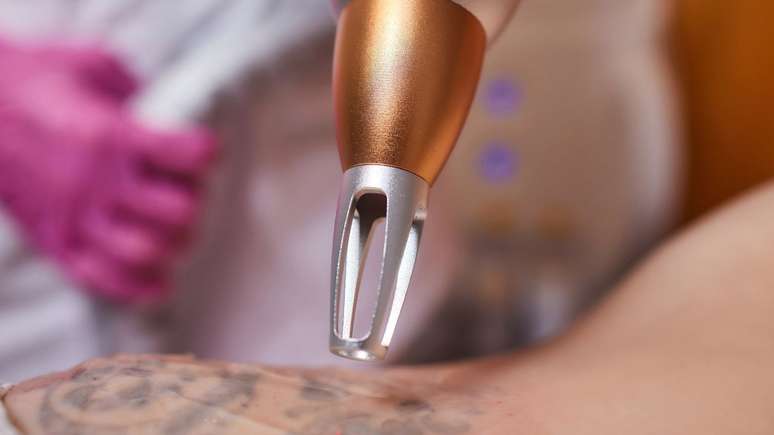The expert explains how laser tattoo removal is performed, the number of sessions required and what care is needed after removal
Before you do tattooyou have to think a lot about the choice of art. Many people end up regretting their decision after a while, either because they simply don’t like the design anymore or because it reminds them of something or someone that the person no longer wants to remember (as in the case of someone who tattoos someone’s name and then gets into a fight with the person).
However, if you you’ve already gotten the tattoo and you regret it, the solution is the art removal. The most used technique for this today is with laserwhich although painful, is the most effective and safe.
And how exactly does this procedure work? How many sessions are needed? Answer these and other questions with the explanations of Paula Caldeira, functional dermatologist of the Maislaser franchise, below:
Laser operation
The laser is based on selective photothermolysis, that is, light pulses are emitted and absorbed by the tattoo pigments. There are different wavelengths, which are used for different pigment colors and phototypes.
“During the treatment, the laser light penetrates the tissue, breaking the pigments into much smaller particles, which then disappear because the body’s immune system eliminates them,” explains Paula.
The effectiveness of removal varies depending on the depth of the ink deposit, the type of ink, and the age of the tattoo. Although many tattoos can be lightened, some may not be completely removed and may leave shadows or residual pigment.
Initial assessment
Before removing a tattoo with a laser, it is essential to carry out an initial assessment, in which the professional will be able to examine the tattoo, understanding its size, location, color, type of ink used, etc. After all, it is only from this that it will be possible to perform an effective procedure.
Number of sessions
This varies depending on the color, depth, and age of the tattoo. Dark inks, such as black and dark blue, respond more quickly, while light colors, such as red, green, and yellow, may require multiple sessions and specific types of lasers.
The interval between sessions is 30 days to allow the body to eliminate fragmented pigments. The tattoo’s response to treatment is evaluated at each session and adjustments are made as necessary to optimize results. On average, most tattoos require 5 to 12 sessions, keeping in mind that the response is individual.
Post-treatment care
Although the procedure is safe, it is common for people to experience some side effects. “During the procedure, it is common to feel some discomfort, as well as swelling and redness. Blisters are not common,” Paula explains.
And, to avoid worse effects, you need to follow all guidelines regarding sun exposure, skin hydration, and sunscreen use.
“It is essential to choose a qualified professional and to carefully follow the post-treatment care instructions. This includes avoiding sun exposure, keeping the treated area clean and moisturized, and not scratching,” concludes the specialist.
Source: Terra
Ben Stock is a lifestyle journalist and author at Gossipify. He writes about topics such as health, wellness, travel, food and home decor. He provides practical advice and inspiration to improve well-being, keeps readers up to date with latest lifestyle news and trends, known for his engaging writing style, in-depth analysis and unique perspectives.






![It All Begins Here: What’s in store for Tuesday 21 October 2025 Episode 1289 [SPOILERS] It All Begins Here: What’s in store for Tuesday 21 October 2025 Episode 1289 [SPOILERS]](https://fr.web.img3.acsta.net/img/99/48/99481db5c03e1ff295fce95b23125991.jpg)
